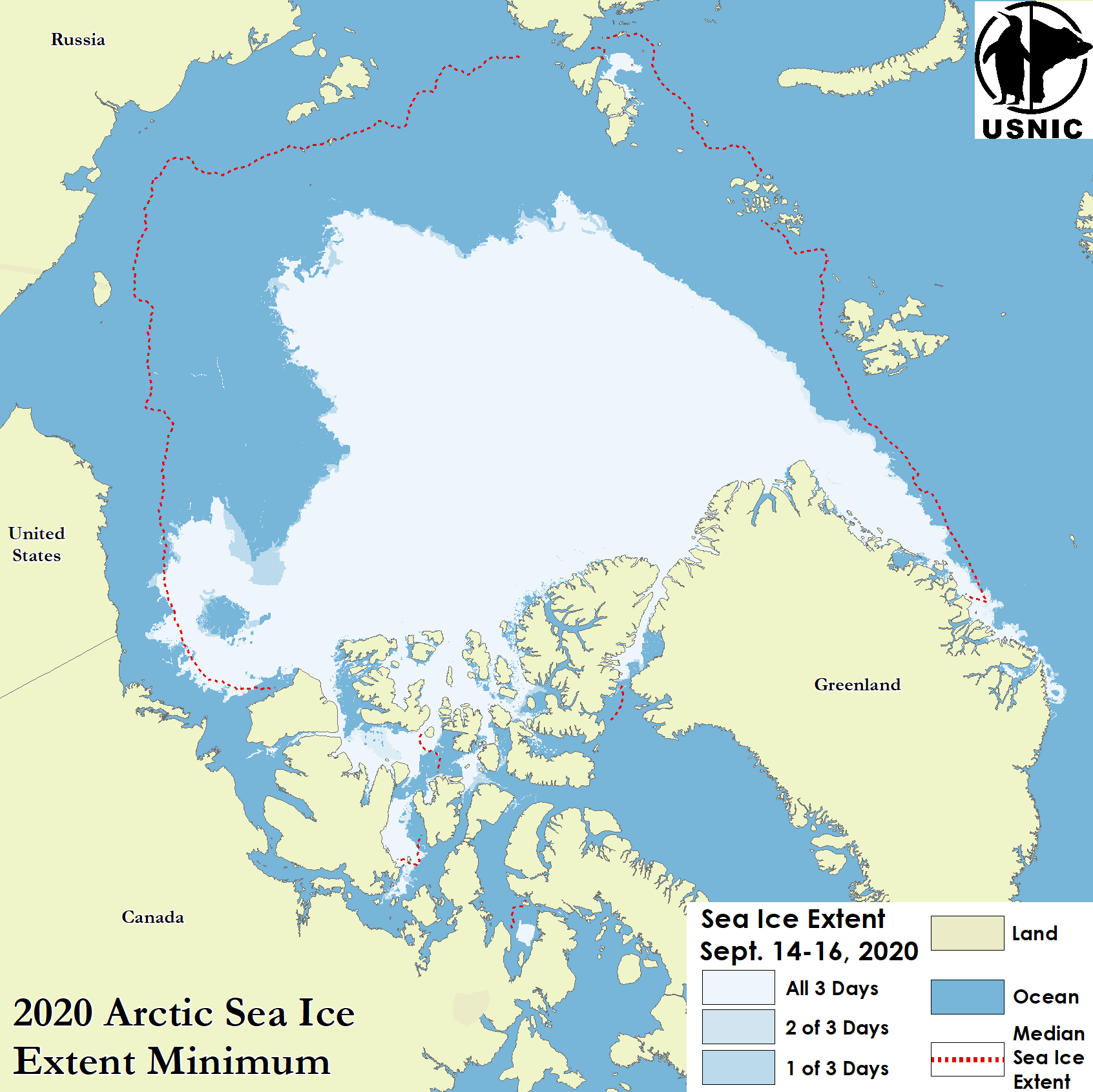Arctic Sea Ice at Minimum Extent
By LT Falon M. Essary, USN
U.S. National Ice Center
September 24, 2020
U.S. National Ice Center (USNIC) determined the 2020 Arctic sea ice extent minimum, shown in Figure 1, was reached on September 15, 2020.
The Interactive Multi-Sensor Snow and Ice Mapping System (IMS) desk used a threshold of 40% ice coverage at 4 km resolution in its trend analysis. This year’s analysis indicated a minimum 3-day average of 3.75 million square kilometers recorded on 14 September through September 16. USNIC uses this 3-day running mean to calculate ice extent, a method used to reduce subjectivity and variability in the determination of ice extent while providing a clear trend line. This year’s minimum is the second lowest recorded since the 4km analysis began in 2004, and is approximately 166,000 square kilometers less than last year.
The National Snow and Ice Data Center (NSIDC), in Boulder, Colorado, for comparison, tentatively announced on 21 September that the Arctic sea ice minimum had occurred on 15 September at 3.74 million square kilometers, second lowest on record. The difference between USNIC’s IMS calculated extent and that reached by our partners at NSIDC is primarily due to the differences in threshold values in determining whether a particular data cell is considered to be ‘ice covered’ or ‘not ice covered.’ NSIDC uses a threshold of 15% whereas USNIC uses a threshold of 40%. e.g. a cell that has an ice concentration of greater than 40% is considered ice covered by USNIC.

For more information, please contact:
National Ice Center
Naval Ice Center
Command Duty Officer
Voice: (301) 943-6977
E-mail: nic.cdo@noaa.gov
Twitter: @usnatice
Facebook: @usnatice